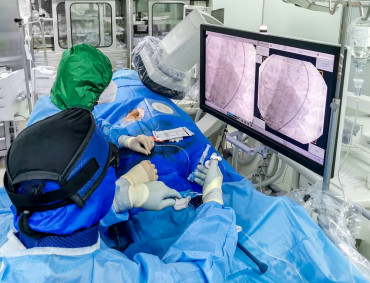How Does Interventional Radiology Malpractice Happen?

Procedures using interventional radiology have become the primary way many conditions are treated. It’s a method that is cost-effective, and it reduces the risks, pain, and recovery compared to traditional types of surgeries.
However, like in other medical procedures, errors can be made in interventional radiology. Therefore, when someone suffers an injury due to the negligence or error of an interventional radiologist, it may be considered medical malpractice.
What Is Interventional Radiology?
Interventional radiology (IR) is a minimally invasive, image-guided treatment for various medical conditions that previously required open surgeries. IR uses traditional imaging technology, like computed tomography (CT), fluoroscopy, ultrasound, and magnetic resonance imaging (MRI), and allows doctors to see images of internal structures, such as tumors, organs, bones, and arteries, as they perform procedures. The precise images enable doctors to perform minimally invasive procedures using tiny tubes guided through blood vessels or other areas to treat affected tissue directly. IR treats numerous conditions, including vascular disease, heart disease, spinal conditions, cancer, neurological conditions, and some women’s health issues.
What Types Of Procedures Do Interventional Radiologists Perform?
Interventional radiologists are board-certified physicians trained in minimally invasive therapies and radiology. They may perform numerous types of minimally invasive procedures, including:
- Catheter insertion – A catheter may be inserted into a large vein to administer nutrition, hemodialysis, or chemotherapy medications. It may also be performed before to a bone-marrow transplant.
- Stent placement – This procedure involves a doctor placing a stent (tiny mesh coil) inside a blood vessel and then expanding the stent to open a blockage in the vessel.
- Angiogram – An angiogram is an x-ray image of the veins and arteries. It’s used to locate blockages or narrowing of the vessels.
- Needle biopsy – A small needle is placed into a part of the body, and it’s guided by imaging to obtain a very small amount of the affected tissue. A needle biopsy can often provide a diagnosis without traditional surgery.
- Angioplasty – In this procedure, a doctor inserts a small catheter with a balloon tip into a blood vessel. The balloon is then inflated, opening a blockage in the vessel.
- Intravascular ultrasound – A doctor performs an ultrasound to view the inside of blood vessels to identify blockages or other problems.
- Embolization – A substance is administered through a catheter into a blood vessel to stop blood from flowing through that vessel. This procedure is done to control bleeding.
- IVC filters – This procedure involves the placement of a small filter into the inferior vena cava, a large vein in the abdomen. It is performed to catch blood clots that could potentially reach the lungs.
- Foreign body removal – The doctor may use a catheter to remove a foreign body from a blood vessel.
- Gastrostomy tubes – A feeding tube may be placed in the stomach if a patient can’t have food by mouth.
- Cancer treatment – This procedure allows doctors to administer cancer medication directly to the affected area or tumor site.
What Are The Most Common Types Of Errors In Interventional Radiology?
It’s important to understand that all medical procedures come with risks, and negative outcomes may happen even though no mistakes or errors were made. However, many IR mistakes are preventable and are caused by someone’s negligence, not just a bad outcome. The most common risks of IR procedures are bleeding and infection. These can occur even though the doctor did nothing wrong.
Many adverse events during interventional radiology procedures involve technical errors like improper device positioning, device malfunction, or device misuse. Additionally, errors may include:
- Wrong patient events
- Wrong medication administered
- Contraindications for the procedure
- Wrong site/side for the procedure
- Catheter-related infections
- Adjacent organ injuries
- Improper treatment of acute complications
- Lack of proper monitoring of the patient during sedation
- Improperly secured device
- Retained foreign body
Have Interventional Radiology Errors Injured You?
If you suffered injuries due to a procedure using interventional radiology, you might be able to pursue a medical malpractice claim. Such medical errors can potentially create negative physical, financial, and emotional consequences. No one should have to live with those consequences. The responsible parties should be held accountable and compensate you for your damages and protect other patients from having to go through the same thing you did.
Ross Feller Casey has recovered more than $3 billion on behalf of those injured through no fault of their own, just like you. We know that you want to be able to provide and care for your family, and your injuries may be preventing that from happening.
Let us help. Contact our law office today to schedule a free initial consultation. We look forward to fighting for your rights and getting you the compensation you and your family deserve.
Disclaimer: Ross Feller Casey, LLP provides legal advice only after an attorney-client relationship is formed. Our website is an introduction to the firm and does not create a relationship between our attorneys and clients. An attorney-client relationship is formed only after a written agreement is signed by the client and the firm. Because every case is unique, the description of awards and summary of cases successfully handled are not intended to imply or guarantee that same success in other cases. Ross Feller Casey, LLP represents catastrophically injured persons and their families in injury and wrongful death cases, providing legal representation in Pennsylvania and New Jersey.





